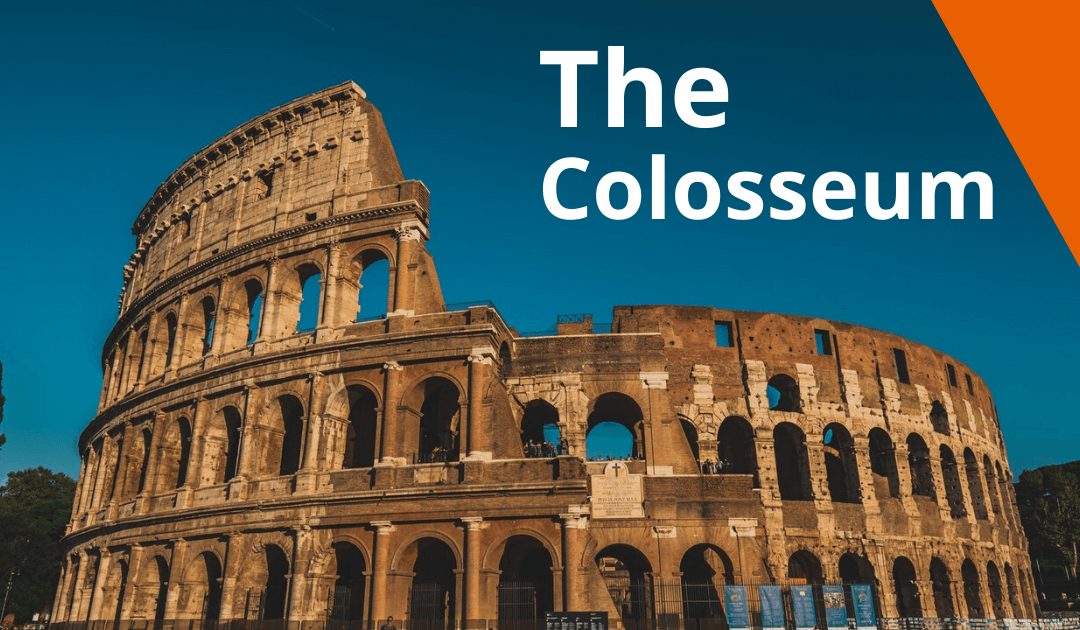The Colosseum also known as Flavian Amphitheatre, is situated in Rome, Italy. It is an oval-shaped amphitheater which was constructed under the emperor Vespasian in AD 72 for the public entertainment events.
It is one of the “seven wonders of the world”. Let’s find out more information about this amazing structure in this blog.
In this blog, You will find out –
- General introduction of The Colosseum
- The basic concept of structure
- Architectural specification
- Structural specification
- Materialistic specification
- Services of The Colosseum
- Awards & Records
- Visiting The Colosseum
- Conclusion
- FAQ
General Introduction of The Colosseum
The Colosseum is the main symbol of Roam that constructed between AD 72 and AD 80 during the region of Emperor Vespasian. It is situated at center of the city of Roam in Italy.
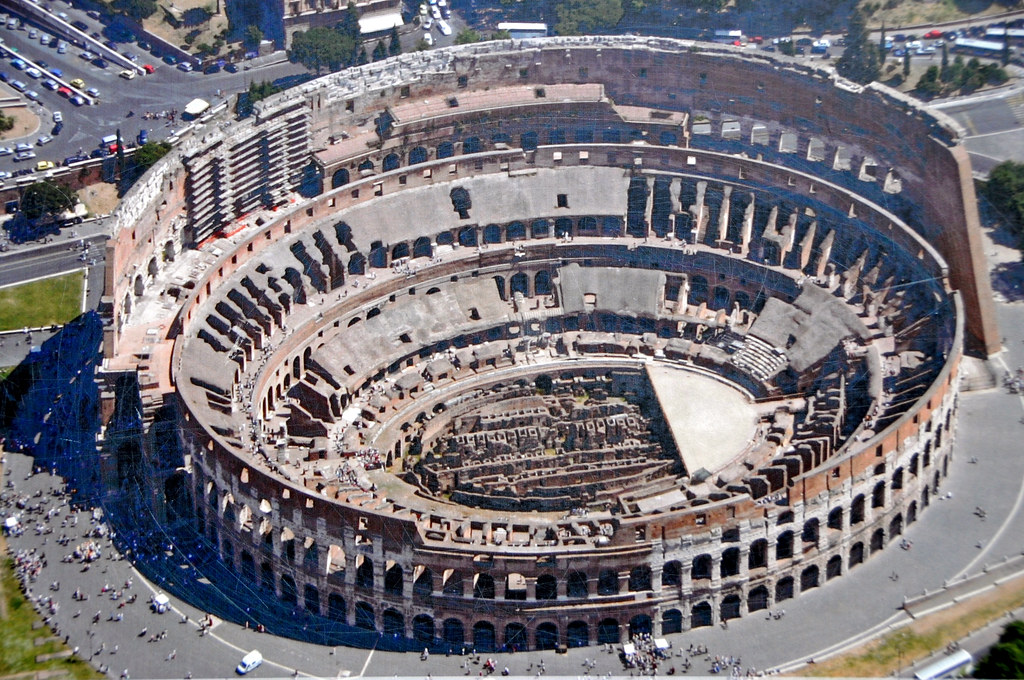
It was the largest amphitheater build at that time with a capacity of 50,000 to 80,000 people. So, It was use for public entertainment events like gladiatorial contests, mock sea battles, animal hunts, a drama based on classical mythology and so more.
Later, It was also use for the housing, workshops, a fortress, Christian shrine and so more later. Although, due to the earthquake it’s major part is destroy but still It is one of the most popular tourist attractions points in Roam. Therefore, In 2018 it becomes the most popular tourist attraction in the world with the 7.4 million visitors in one year.
Basic Concept of the Structure
In the past time, wealthy Romans organized funeral games in the honor dead. They believed that human sacrifices at the dead person’s funeral would impress the God and soul will satisfactory entrance into the afterlife.
As the popularity of these games increased, large amphitheater of oval-shaped start constructing by woods. Besides that, In the first century gladiator games also required some of the major public gathering spots. In Sequence, Stones were use for the construction of the amphitheaters.
To provide a permanent arena in the center of the Ancient Roam where various entertainment forms can be conducting easily, Emperor Vespasian gifted “The Colosseum” to the Romans citizen.
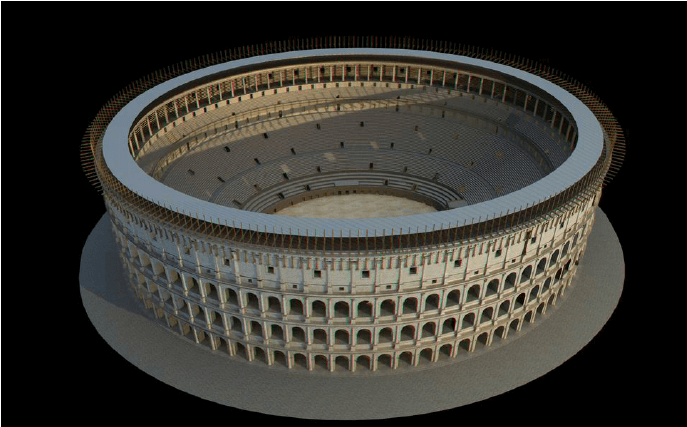
The original name of the Colosseum was the “Amphitheatre Flavian” or “Flavian Amphitheatre” because it was build by Flavian Dynasty. Later, the name Colosseum comes from the “colossus of Nero”, a 30-meter tall bronze statue that once stood nearby this amphitheater.
Architectural Specification
The structure is elliptical in shape with the long axis of 188 meter and the short axis of 156 meter. It has a total of four floors in which three floors have arched windows and the fourth one has small rectangular windows.
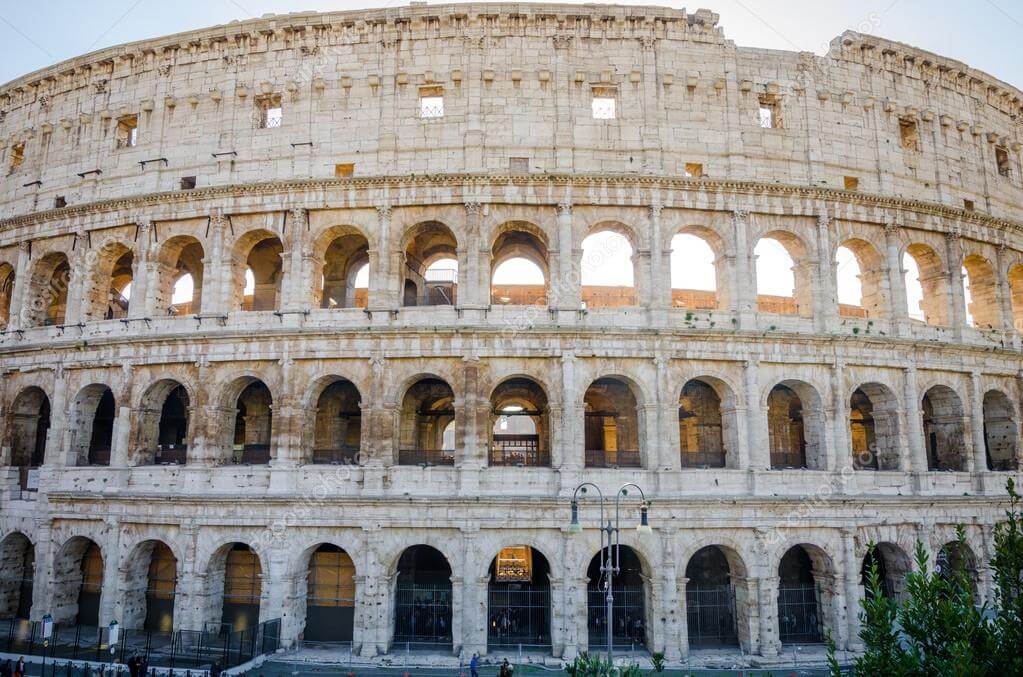
On the ground floor, the arch’s height is 7.05 m. and width is about 4.20 m. while on the other floors arches height is 6.45 m. The total height of the building is 48.5 m. Each floor have total 80 arches. From which, four arches used for the main entrance and about rest of 76 arches for the easy access to the seats.
The entire four-story column decorated in different ways like the first story column with the Tuscan order, the second-story column with Ionian, third story column with corthinian style and fourth story column with pilasters and Corthinian capitals.
Arena, where shows took place, that floor made with the wooden planks with dimension of 76 m long and 44 m wide.
The amphitheater had two entrances to the arena. First, NW gate known as the “Porta Triumpphalls” was use for the entrance of the gladiators and second, SE gate known as the “Porta Libitinaria” was use for the dead gladiators.
With all of that, The corridor and stairs were plan in such a manner that around 50,000 to 80,000 number of the public can easily access to different classes and exit outside. Also, there were special boxes were provided for the Vestal Virgins at the south end and for Emperor at the north end.
Structural Specification
The Colosseum is a completely free-standing structure in which exterior and interior architecture derives from Roman theaters.
Structure of the Colosseum design in such a way that radial walls at the ground floor go to the arena from the external corridor. That all walls built with four big blocks of travertine (type of rock) pillars. These four pillars reach to the second floor and end at just below the cave.
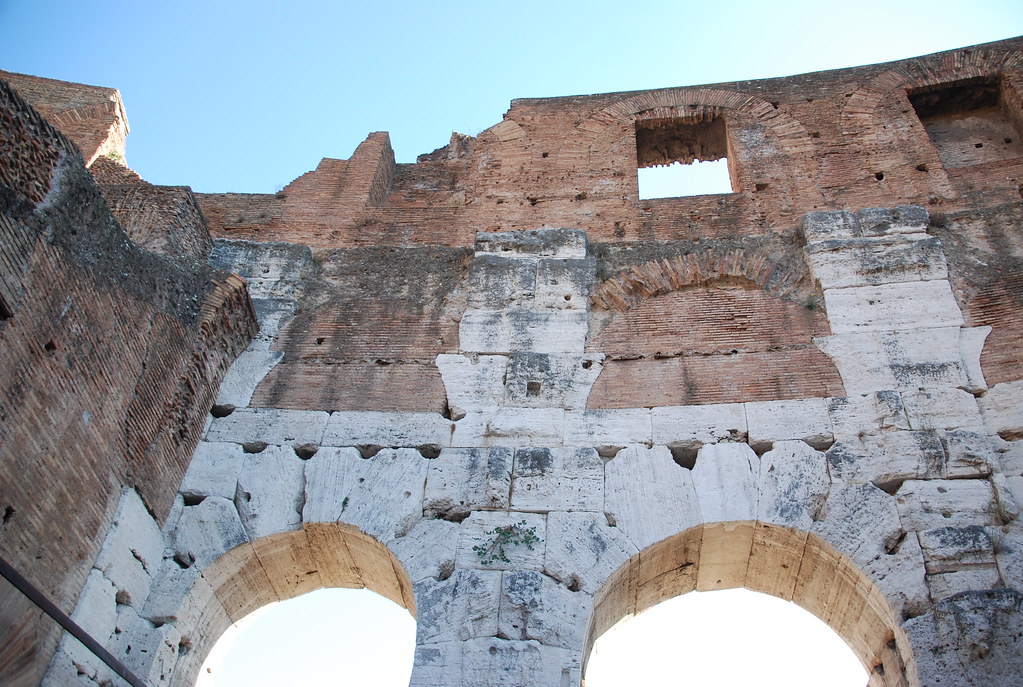
The filling material between these pillars made with square blocks and cement. In addition, a travertine pillar was connect with the top of the radial wall with large arches that was made by bipedal bricks.
A corbel was position at the top of the attic. This corbel supported the awning and keep safe viewers from the sun and rain. The two-third of the arena was cover with the canvas that is a net-like structure made of ropes with a hole at the center. To provide a breeze for the audience, this canvas sloped down towards the center, so it catches the wind.
In addition, there was a Ludus Magnus (training school of gladiators) nearby the Colosseum that connected through the underground passage which allows easy access for the gladiators. It was also popular in Roman due to its miniature training arena.
In the arena, there were hundreds of fountains place to satisfy the thirst of spectators. For that, Aqueducts were use to store the water and pipes were laid in walls for the supply of water.
Also, there were a series of tall stones posts around the Colosseum with the perimeter of 18 m but at present, only five stones remain on the eastern side. As per the many explanations that have been a religious boundary or an outer boundary for ticket checks.
Materialistic Specification
In the construction of the Colosseum wide variety of materials were used like –
- 100,000 cubic meter of travertine limestone was use for the outer facade.
- 300 tons of iron clamps were use for holding travertine blocks.
- For light-weight and strong vaulted arches concrete was use.
- Volcanic rock Tufo was use in cement and inner walls.
- Marble was use for the seats.
- Tiles were use for decoration of walls and floors.
Services of The Colosseum
At that time
The Colosseum amphitheater was used for the public gathering and entertainment of the Romans. The most common entertainment methods for roman are
- Gladiators fighting
- Art presentation by workers
- Wild animals hunting
- Reconstruction of forest spaces
- Reconstruction of naval battles
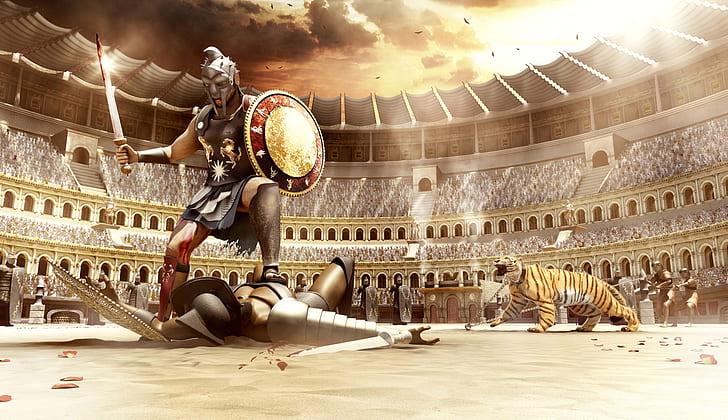
At present
Today The Colosseum is a major tourist attraction in Rome and thousands of visitors come to visit this amazing structure of Romans. There is a museum dedicated to the Greek God Eros on the upper floor of the structure.
Increment in visitors
The number of visitors keeps increasing at The Colosseum due to its popularity. Figures below show the results…
| Year | Number of visitors |
| 1998 | 2811076 |
| 2003 | 3135905 |
| 2008 | 4777989 |
| 2013 | 5625219 |
| 2014 | 6171702 |
| 2015 | 6551046 |
Media
- The Colosseum has been used in a variety of media due to the prominent landmark of Rome
- It has featured in many movies (Gladiator 2000), documentaries, video games, and many more.
Awards and Records
On July 7, 2007, The Colosseum is listed in the “seven wonders of the world” after a survey sponsored by the Universal Swiss-Canadian filmmaker Bernard Weber, attended by 100 million people of all the continents according to organizers.
Visiting The Colosseum
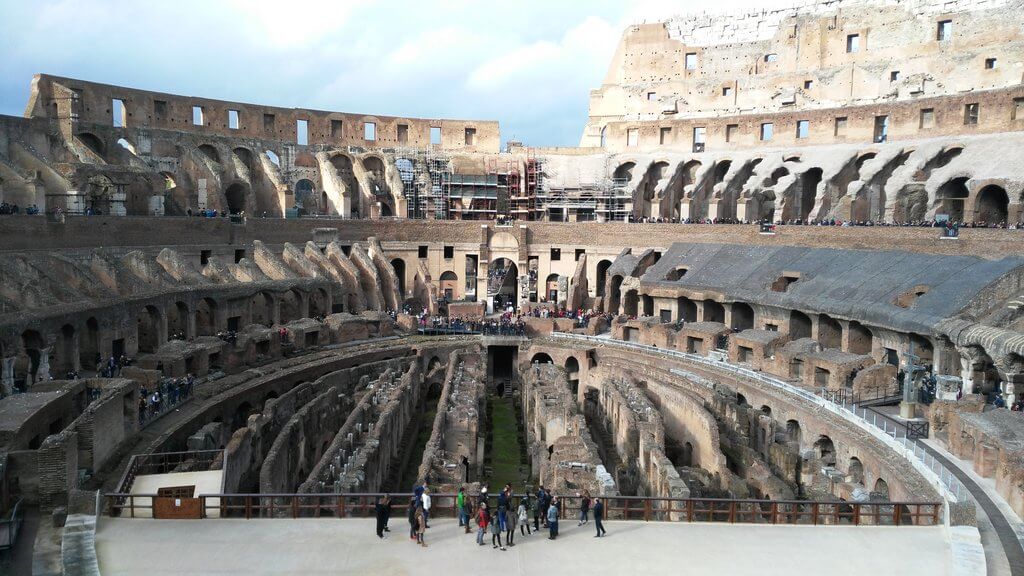
After getting so much information about this amazing structure, everyone wants to get a tour of this. So, if you plan a trip to Italy, your trip will not completed without visiting The Colosseum.
Way to reach at The Colosseum
It situated at Piazza del Colosseo, 1, 00184 Roam RM, Italy. To reach here, you can use the following ways
- Service line buses pass by the Colosseum drop you from anywhere in the city
- If you using metro then metro line B helps you to reach here, you have to stop at Colosseum station.
- Otherwise, you can use a personal vehicle like a taxi or car.
Timing
It is open daily from 8:30 am to 7 pm.
Price
- Adults ticket price $12.90
- European Union members ticket prices $ 8.10
- Children’s less than 17 years of free entrance
Conclusion
In the conclusion we can say that The Colosseum is one of the marvels structure in the history of civil engineering. Also, it shows that how people of Roams was entertain in their life. Besides that it describe the popularity of Gladiators Fighting at that time.
Also read – Great Wall of China- Concept, Structure, Materials & Visiting
Great Pyramid of Giza- World’s Most Mysterious Structure
Frequently Asked Questions
It was constructed between AD 72 and AD 80 during the region of Emperor Vespasian.
The Colosseum was a amphitheater which was used for the public gathering and entertainment of the Romans. It was also used for many other purposes like gladiators fighting, art presentation, wild animals hunting and so more.
The structure is elliptical in shape which long axis is about 188 meter and short axis is about 156 meter.
About 1,00,000 cubic meter of travertine limestone was used in The Colosseum.
Amphitheatre” because it was built by Flavian Dynasty. The name Colosseum comes from the “colossus of Nero”, a 30-meter tall bronze statue that once stood nearby this amphitheater.
On July 7, 2007 The Colosseum was added in the wonders of the world.
It having the capacity of 50,000 to 80,000 people at once which was the highest at that time.
Civil Engineer | Building Planner | Content Writer | Freelancer
Hello there,
I am Passionate of planning and designing of buildings. Skilled in AutoCAD, Revit, 3d Max and Etabs.
With that I also like to writing blogs and content.
